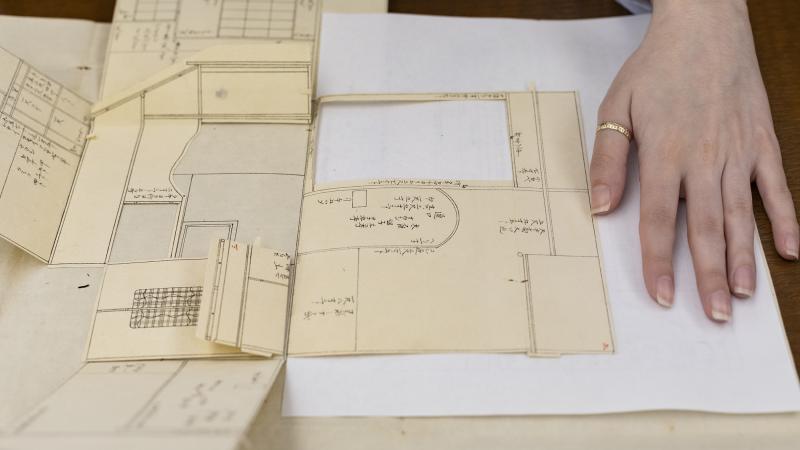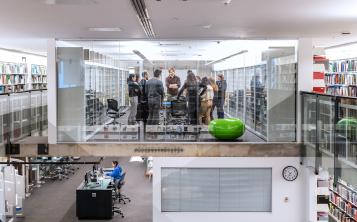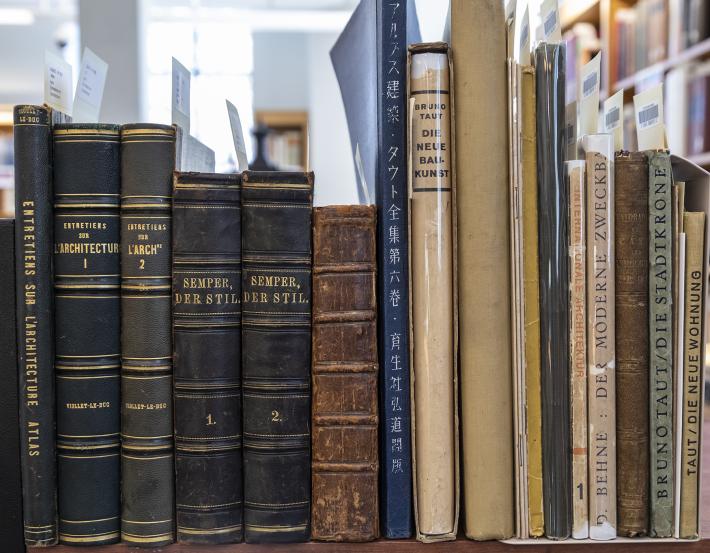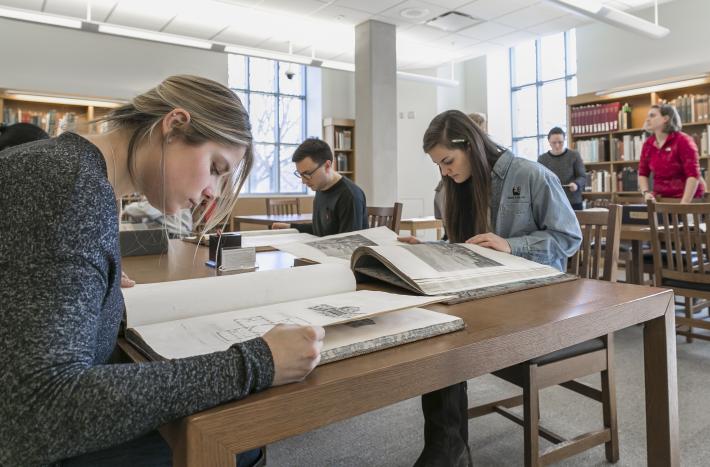Tea House 25
The wrapping opens to a center of attached folded paper. A flap lifts into a wall and then another until the form of a Japanese tea house appears. A bench, shelf, and ceiling unfold to further shape an interior space illuminated by cutout windows. The interior and exterior walls bear manuscript annotations that identify structural dimensions, original materials, and textures used. Detailed drawings on all flaps delineate interior decor, window structures, tokonoma details, shoji windows, and interior shoji walls. A red stamp (判子, hanko) on the platform plan identifies Tansai Nobutatsu (覃斎信立) as the artist.
Tea House 25 is included in a collection of 65 architectural models of chashitsu (茶室, teahouse) pop-ups, yoritsuki and koshikake (waiting huts and roofed arbors) associated with the Japanese cha no yu (茶の湯, tea ceremony). These models are believed to be from Kyoto and date from the first half of the nineteenth century. Created by Tansai Nobutatsu, this extremely rare collection of okoshi-ezu (起絵図, pop-up drawings) belongs to the Herman J. Albrecht Library of Historical Architecture housed in Ohio State’s William Oxley Thompson Memorial Library.

Knowlton School graduate architecture students Noël Michel and Neda Nezhad, who serve as the Albrecht Graduate Research Associates, are responsible for documenting and promoting the contents of the Albrecht Library to the public. They would include Nobutatsu’s models at the upcoming Albrecht Library Open House, but the fragility of the nearly 200-year-old washi or kozo construction paper prohibits their public perusal.

Instead, Michel and Nezhad will offer the next best thing: they will present 1:1 scale replicas of Tea House 25, 17, and 4. The scale replicas offer visitors the opportunity to create a three-dimensional structure from the 2-dimensional drawing. They will also produce animations that show the models opening and closing as well as fly-through animations. To create the animations, Michel and Nezhad measured and then drew the walls in 2D CAD, creating surfaces with 0.001″ thickness that were then rotated into correct vertical positions in 3D space. The final steps involved texture mapping the wall images into Rhino space on each interior and exterior surface, and then using Lumion render software to create the animations.
The designs of traditional tea houses evoke the precise and subtle formality of the ritualized tea ceremonies that would take place within these structures. These new architectural representations crafted by Michel and Nezhad allow the viewer to experience the spatial intricacy of these highly ceremonial spaces in Japanese culture.

The set of Nobutatsu’s pop-up drawings in the Albrecht Library is one of only three known collections in the world. The set includes models of tea houses from the 13–19th centuries, with many designed by important names in the history of the tea ceremony: Sen-no-Rikyu (1522–91), Takeno Joo (1502–55), Genpaku Sotan (1578–1658), Koshin Sosa (1613–72), and Genso Sosa (1678–1730). Scholars still debate whether these drawings were used during design or simply served as a record of existing buildings.
For those interested in experiencing the actual Nobutatsu okoshi-ezu (起絵図, pop-up drawings), they are available by appointment through the Rare Books & Manuscripts Library at Ohio State’s Thompson Library. Contact Curator of Thompson Special Collections Dr. Eric Johnson or Japanese Studies Librarian Dr. Ann Marie Davis to schedule an appointment.
To view the paper and digital replicas of Nobutatsu’s pop-up tea house drawings and other rare and historically important volumes from the Herman J. Albrecht Library of Historical Architecture, Noël and Nezhad are organizing an open house on March 29 at 1:30 p.m. in the Rare Books Room of the Architecture Library in Knowlton Hall.
Founded in 2006, the Herman J. Albrecht Library of Historical Architecture is a Special Collection that was established and is endowed by the family of the respected Ohio architect Herman J. Albrecht (BSArch 1908). The library houses Albrecht’s personal collection of extremely rare and valuable architectural materials that were stored in his office. Through an annual fund, the goal of the foundation is to aggressively acquire more rare books on architecture each year, with an emphasis on books published between 1485 to 1950. In addition to books, the Albrecht Library includes architectural sketches, renderings, drawings, and photographs of Herman Albrecht's work.





